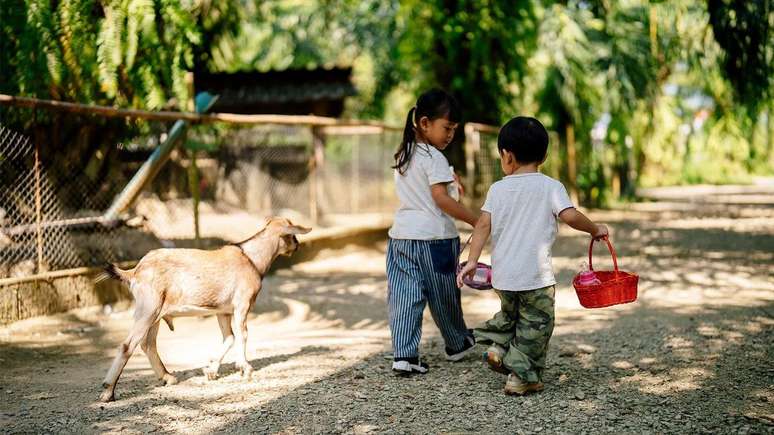The research shows that identical twins are more likely to share allergies. Genetics and environment in which we live influence the development of allergic reactions
Allergies – if a sneezing caused by flower pollen or by the difficulty of breathing caused by a certain type of food – are caused by a combination of a person’s genes and the environment in which they live. The more these things are shared by two people, the more likely it is that they must be allergic to the same substances.
The twins are more likely to develop allergies in common by sharing the genes and the environment in which they live. But the story does not stop there.
The allergies are extremely complex and several factors influence those who develop them and not.
What is an allergy?
Our immune system produces proteins from defense, antibodies, whose work is to protect and attack any invading germ or other dangerous substances that enter our body before you can leave us sick.
An allergy occurs when the body confuses allergens – normally harmless supports, but which can cause hypersensitivity to people, such as pollen and mites – with an intruder agent. With this, antibodies attach these allergens, starting a reaction of the immune system.
This process triggers the most common symptoms of an allergy: sneezing, raw nose, itching, watery eyes and cough. These symptoms can cause discomfort, but usually they are light.
There is also the possibility that an allergy will cause anaphylaxis, a type of reaction that can lead to death and requires immediate medical care.
For example, when a person eats a food to which he is allergic and has swelling in the throat and in rash, this is considered a case of anaphylaxis.
Traditional treatment for anaphylaxis is an injection of epinephrine hormone, better known as adrenaline, which is applied to the leg muscle. People with allergies can bring an applicator to enter the emergencies if they have a serious anaphylactic reaction. Today there is also a spray of nasal epinephrine, which quickly acts on the body.

A person can be allergic to external elements, such as the pollen of trees and bees bites, or to things inside the house, such as pets and mites – microscopic insects that stick to the rugs and mattresses.
In addition, a person can be allergic to certain types of food. Food allergies affect between 4 and 5% of the population. The most common are cow’s milk, eggs, wheat, soy, peanuts, fish and seafood.
In some cases, these allergies disappear over time, but in others they last a life.
What influences the development of allergies
Each antibody has a specific goal, which explains why some people are allergic only to one thing.
The antibodies responsible for the allergies also have the function of eliminating any parasite that our body finds. Thanks to modern medicine, people in the United States rarely have to do with parasites.
Also so, these antibodies are in alert and sometimes react overly with harmless things such as pollen or some foods, triggering an allergic crisis.

Our hygiene and the environment in which we live also influence the probability of having a sort of allergy. The greater the variety of bacteria that a person is exposed in the early years of life, less possibility of developing allergies.
Studies show that children growing up in farms, who have pets before 5 years or have several brothers are less likely to develop an allergy. Being breastfeeding as a child also protects us from some types of allergy.
On the other hand, children growing in cities are at greater risk of developing allergies – probably due to air pollution – as well as those who grow around the people who smoke.
Children who experience food previously are also less likely to develop food allergies than those who have a late food introduction.
In adults, some professions can also contribute to the development of an environmental allergy. For example, hairdressers, bakers and mechanics can have allergic reactions due to exposure to chemicals.
Genetics also plays an important role. If a parent has food or environmental allergies, children will be more sensitive to developing them. Especially in the case of peanuts, if your father, your mother or your brothers are allergic, the probability that you have this allergy is seven times greater.
Can twins have the same allergies?
Back to the question about the twins: yes, they can be allergic to the same things, but not always.
The researchers in Australia discovered that in a study between 60% and 70% of the twins had environmental allergies in common and Univteteline (identical) twins were more likely to share allergies than the Biviteline twins (not identical).
Univteline twins share 100% of genes, while the two -tone twins share only 50%, the same as any other brothers.
Other research was conducted to understand the genetics of food allergies. For example, a studio on peanut allergy discovered that identical twins were more likely to develop this type of allergy than unsally identical twins.
That is, the twins can be allergic to the same things, and it is more likely to happen according to the genes they share and the growing environment. But this does not mean that they are automatically allergic to the same things.
Imagine, for example, twin brothers who were separated on maternity and raised in different houses: one in a farm, with animals and one in a city. And a parents was a smoker and the other did not. And one of them lived with several brothers, but the other was the only son. Certainly they could develop different allergies or perhaps not develop any allergy.
Scientists like me continue to search for allergies and hope to have more answers in the future.
*Breanne Hayes Haney is an immunologist specialized in allergies at the University of Western Virginia in the United States.
This entry was originally published on the academic news website The Conversation and republished by BBC Future with a Creative Commons license.
Source: Terra
Ben Stock is a lifestyle journalist and author at Gossipify. He writes about topics such as health, wellness, travel, food and home decor. He provides practical advice and inspiration to improve well-being, keeps readers up to date with latest lifestyle news and trends, known for his engaging writing style, in-depth analysis and unique perspectives.








